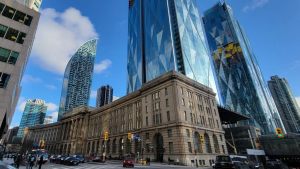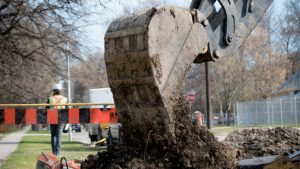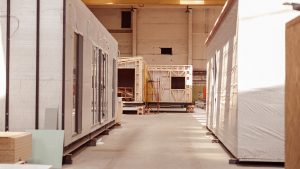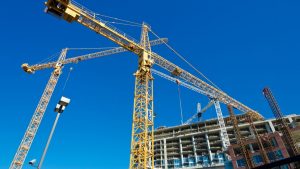How many dollars of federal funding will directly create new housing units depends not only on how you ask the question but how you interpret the answer.
The City of Toronto says the $471 million over three years is expected to generate 11,780 units, which works out to $37,000 unit, a small percentage when the cost of construction for an average unit in a 50-unit building is about $400,000 plus the cost of the land. Add in the HST relief for purpose-built rentals and thatтАЩs a total $87,000 relief.
However, beyond the 11,780 units proposed under that scheme, the goal of 65,000 units Mayor Olivia Chow wants to build will require between $500 million and $800 million per year in grant funding over the next seven years plus between up to $1 billion in low-cost financing/repayable loans over that time, which is $7 billion in total.
тАЬAs such, I think we need more focus, not just on affordable housing, but more housing supply, and why just rental,тАЭ says Jim Ritchie, president at Tridel, which ultimately means a change of mindset.
тАЬThereтАЩs more awareness around the cost of housing in various municipalities, but we need to look at how things get done which is often challenging.тАЭ
However, Brian Teefy, vice-president at StrategyCorpтАЩs Public Affairs practice, is hoping this is the start of a turnaround on housing strategies across the board.
While he agrees the $471 million from the Housing Accelerator Fund (HAF) is not more than a тАЬdrop in the bucket,тАЭ heтАЩs more positive around the future plans for the 60,000 units the city is pushing for and around how thereтАЩs been a new approach to solving housing issues.
тАЬWe work with a lot of municipalities and we see a sea change in how they look at housing and getting more housing built,тАЭ he says, noting heтАЩs encouraged to see there are deadlines and milestones built into the dispensation schedule of the federal funds.
Still, he says, thereтАЩs much work to do for the municipalities.
тАЬThe program is a carrot designed to develop more zoning for housing and transit orientated communities,тАЭ he says.
That said, people shouldnтАЩt be surprised to see the money isnтАЩt going to translate directly into more housing units on a dollar-to-units basis.
тАЬItтАЩs to facilitate faster approvals and permitting and things like hiring a new deputy city manager to oversee growth,тАЭ says Teefy.
To get the money Toronto has agreed to changes in how it approves and processes housing as have some other municipalities.
However, the initial HAF funds donтАЩt directly go into reducing unit costs. In fact, when you break down the City of Toronto list it gets more complex. Many units were already in the works before the funding was secured and not all are shovel-in-the-ground projects:
The goal of 700 units by cutting red tape and streamlining the process was started in March 2023 and ends in September 2025. The HAF goals have been applied retroactively.
Under a program that began in June 2023, 2,600 Toronto Community Housing facilities will be repaired while the HAF monies will meld with city funds to create affordable and rent-geared-to-income units to the permitting stage by 2026, though no deadline is set for construction itself.
Some of the funds will go to buying up 60 housing units to rent out under the cityтАЩs auspices through December 2025.
The city is now looking at 22 prime sites it owns, including Green P parking lots to create 3,200 affordable rental homes involving $1.3 billion in land value.
Building 880 homes at maximum density on the Toronto waterfront.
Creating 3,100 rental units through a program, which started in November 2023, to discount or waive development charges and/or fees, over and above what is currently enabled by the city and province. Additionally, rental housing development applications will be prioritized for development review and approvals.
The city also hoped to create 700 тАЬmissing middleтАЭ housing units through a program that started in May 2023 and ended in March 2024.It planned to add low-rise housing in existing residential neighbourhoods. In May 2023 it passed Official Plan amendments to allow duplexes, triplexes and fourplexes in residential single-family neighbourhoods, especially those abutting major streets. As part of this the city plans to pre-approve designs and models to expedite the permitting process.
Another 600 units are projected by тАЬsimplifying the approvals process to increased purpose-built rental supplyтАЭ in existing apartment neighbourhoods. This refers to apartment complexes, especially in the suburbs, which sit on large land tracts used as parking lots and recreational space. The plan is to densify those tracts by adding more housing units. Zoning changes would be waived.











Recent Comments
comments for this post are closed